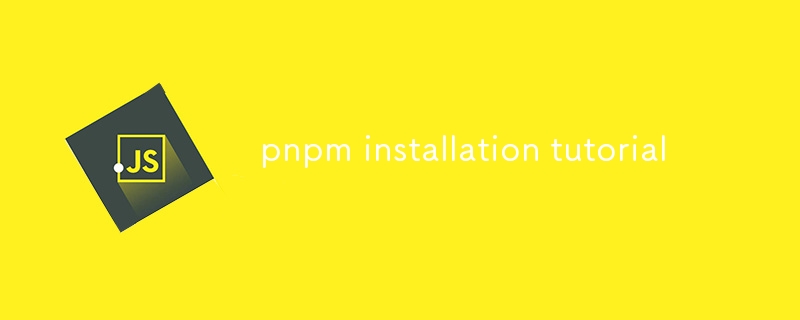
This article provides a comprehensive guide to installing pnpm on different operating systems (Windows, macOS, and Linux), exploring its advantages and disadvantages compared to other package managers, and offering detailed instructions on using pnpm

How to install pnpm on different operating systems?
Pnpm is available for installation on Windows, macOS, and Linux operating systems.
Windows:
<code>npm install -g pnpm</code>
macOS:
<code>brew install pnpm</code>
Linux:
[package_name] with the downloaded package name:[package_name] with the downloaded package name:<code>sudo dpkg -i [package_name]</code>
What are the advantages and disadvantages of using pnpm over other package managers?
Advantages of pnpm:
Disadvantages of pnpm:
How to use pnpm to manage dependencies and versions in a project?
To install dependencies using pnpm:
package.json file in your project directory.package.json
<code>{
"name": "my-project",
"dependencies": {
"express": "^4.17.1"
}
}</code>Advantages of pnpm:
Fast:
Pnpm uses a dependency tree-based installation method, which makes it faster than other package managers.🎜🎜🎜Deterministic:🎜 Pnpm always installs packages in the same deterministic order, ensuring consistent builds.🎜🎜🎜Space-efficient:🎜 Pnpm stores all packages in a single folder, reducing disk space usage.🎜🎜🎜Offline support:🎜 Pnpm can cache packages and install them offline, making it convenient for CI/CD workflows.🎜package.json file in your project directory.🎜🎜Open the package.json file and add the dependency you want to install, along with its version. For example:🎜🎜<code>pnpm install</code>
<code>pnpm update</code>
<code>pnpm install [package_name]@[version]</code>
<code>pnpm remove [package_name]</code>
The above is the detailed content of pnpm installation tutorial. For more information, please follow other related articles on the PHP Chinese website!




